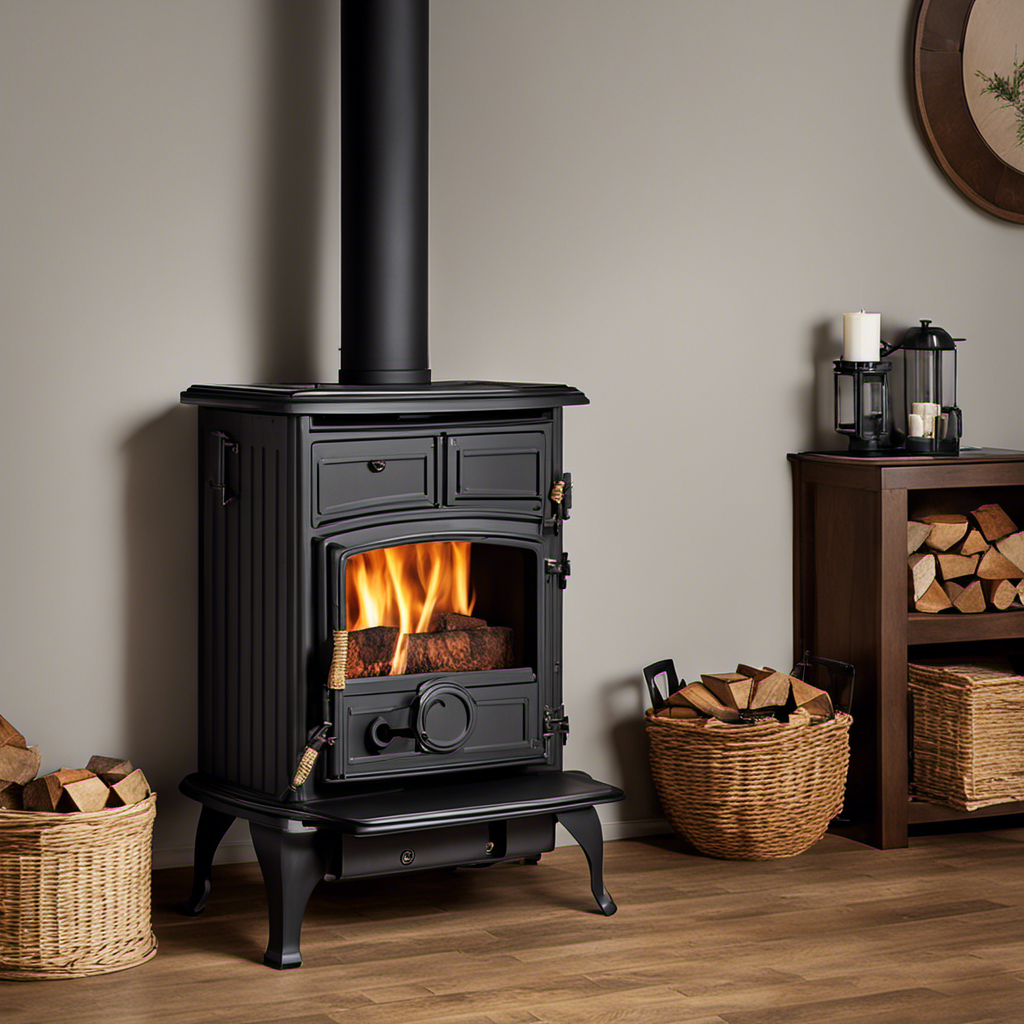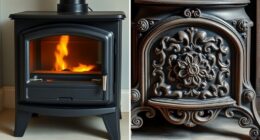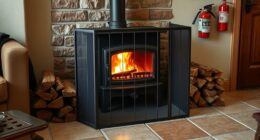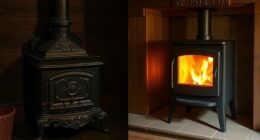
As a homeowner wanting to heat my mobile home, I set out to find a wood stove that is certified for use in mobile homes.
But what makes a wood stove mobile home approved?
In this article, I will delve into the important factors to consider, including certification, clearances, ventilation systems, size and capacity, fuel options, installation considerations, and maintenance.
By the end, you’ll have all the knowledge you need to make an informed decision for your mobile home.
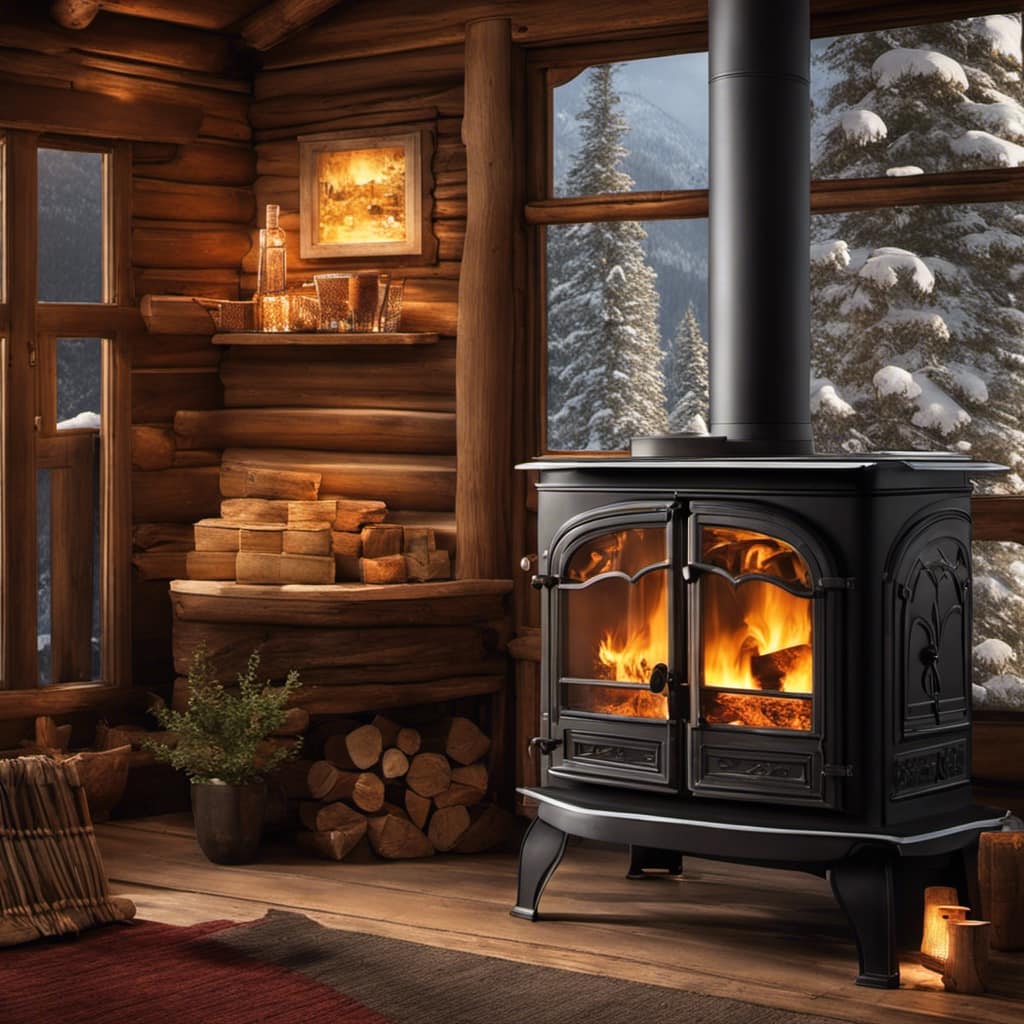
Key Takeaways
- Mobile home certification ensures safety and quality standards for wood stove installation.
- Proper ventilation is essential for indoor air quality and the safe operation of a wood stove in a mobile home.
- Choosing and installing a wood stove specifically designed and approved for mobile homes is important to meet safety and compliance regulations.
- Regular maintenance and cleaning of the wood stove are necessary to ensure safe and efficient operation.
The Importance of Mobile Home Certification
I find it crucial to understand the significance of mobile home certification. Mobile home regulations play a vital role in ensuring the safety and quality of these dwellings. The certification process is designed to ensure that mobile homes meet specific standards and guidelines set by government authorities.
Mobile home regulations cover various aspects, including construction materials, structural integrity, electrical systems, plumbing, and fire safety. These regulations are in place to protect the residents of mobile homes from potential hazards and to ensure that the homes are built to withstand different weather conditions.
The certification process involves thorough inspections and assessments conducted by certified inspectors. These inspectors evaluate various aspects of the mobile home, including its foundation, structural elements, and compliance with fire safety codes. They also check for proper insulation, ventilation, and the functionality of essential systems such as plumbing and electrical.
Mobile home certification provides peace of mind to both homeowners and potential buyers. It assures them that the home has met the necessary standards and is safe to live in. Additionally, certified mobile homes often have higher resale value and are more desirable in the market.
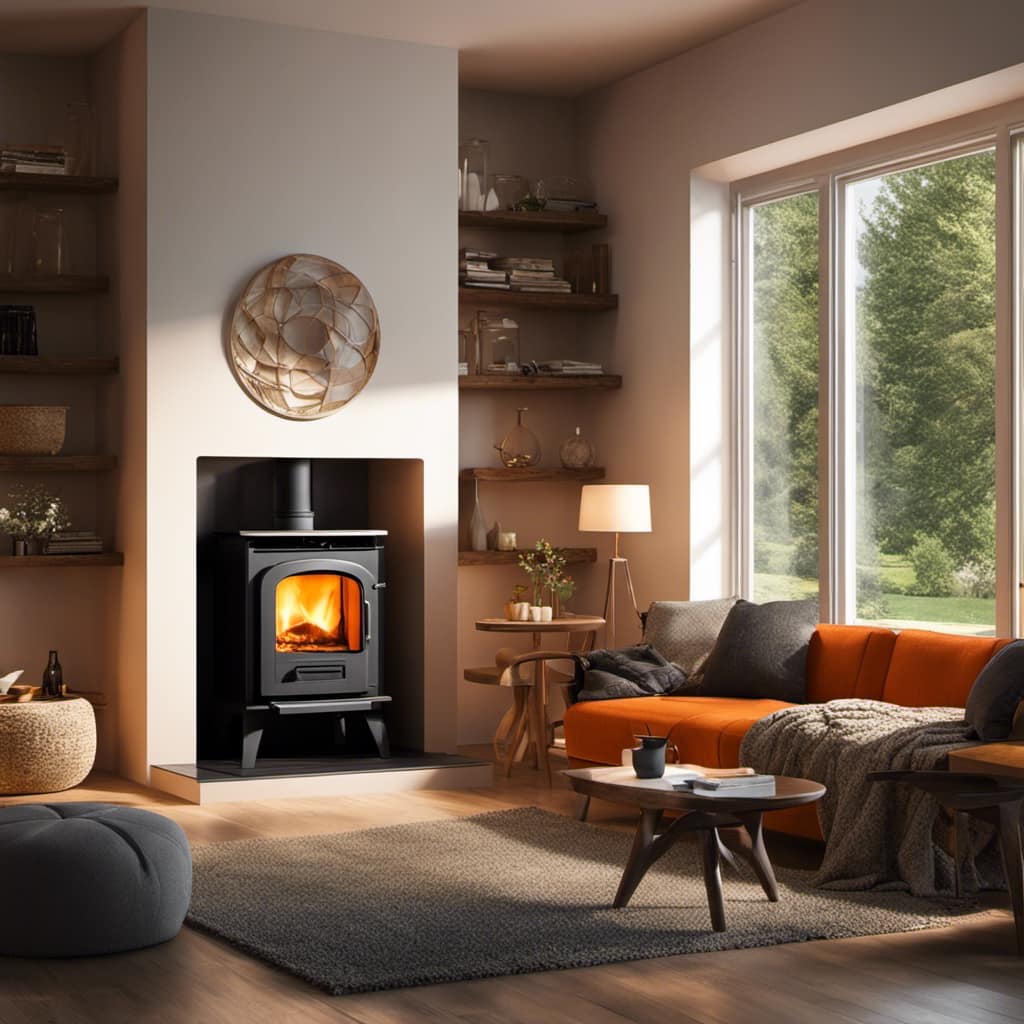
Understanding the importance of mobile home certification helps homeowners make informed decisions and ensures the safety and quality of these dwellings.
Understanding Clearances and Safety Requirements
Understanding clearances and safety requirements is crucial when installing a wood stove in a mobile home.
As an expert in this field, I can confidently explain the safety clearance guidelines that need to be followed to ensure the proper installation of a wood stove.
Additionally, I’ll provide detailed information on the specific mobile home installation requirements that must be met for a safe and efficient wood stove installation.
Safety Clearance Guidelines
To ensure safety in mobile homes, it’s important to follow the specific guidelines for clearance around wood stoves. Fire safety should be a top priority when it comes to installing and using a wood stove in a mobile home.
The installation guidelines provide valuable information on how to properly set up the stove, ensuring that it’s a safe distance away from combustible materials. These guidelines typically specify the required clearances to walls, ceilings, and nearby furniture. It’s crucial to adhere to these clearance requirements to prevent the risk of fire and to maintain a safe environment within the mobile home.
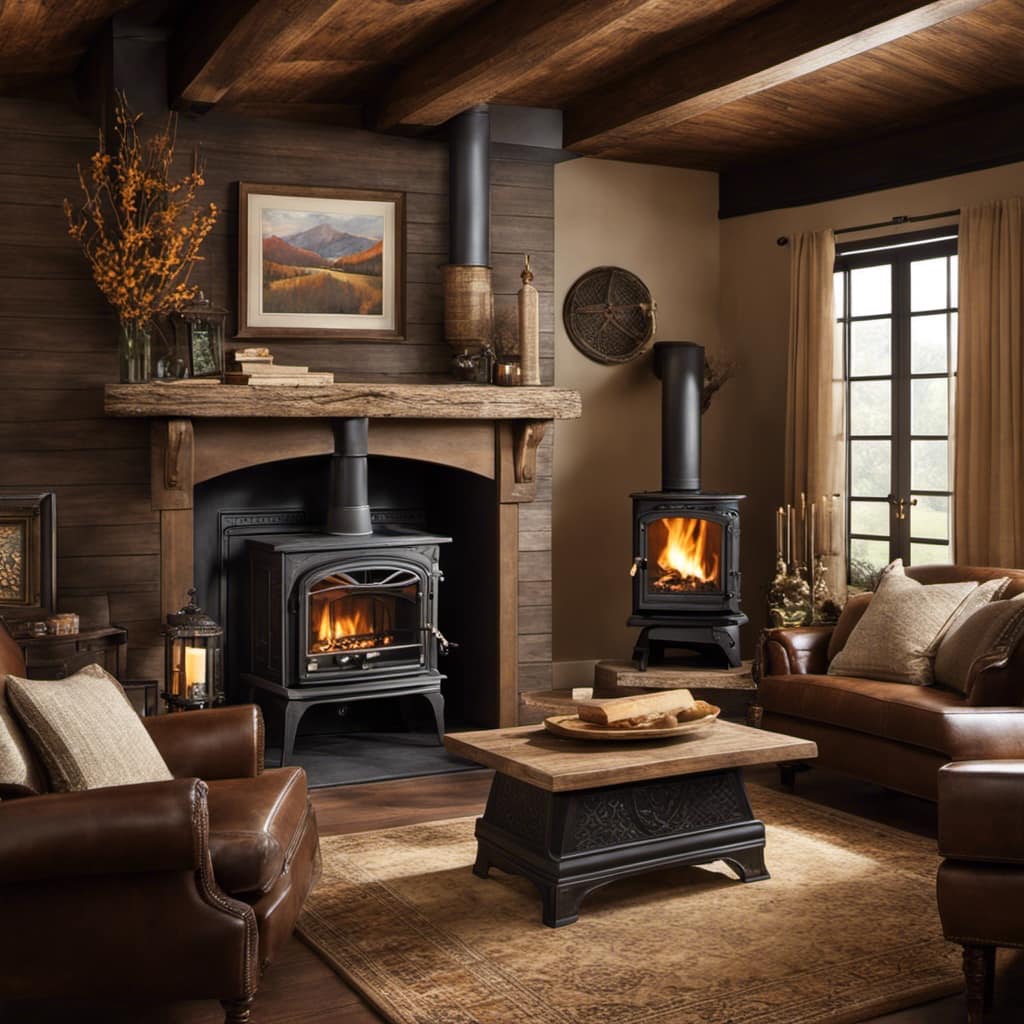
Mobile Home Installation Requirements
Following the installation requirements for a wood stove in a mobile home ensures that it’s installed safely and in compliance with regulations. The mobile home installation process for a wood stove involves specific guidelines to ensure the safety of the occupants and the structure itself. Here are three key requirements to keep in mind:
-
Clearances: The stove should have the proper clearances from combustible materials, such as walls, floors, and furniture. This helps prevent the risk of fire and overheating.
-
Ventilation: Proper ventilation is crucial to ensure the safe operation of the wood stove. It should be connected to a chimney or vent pipe that meets the necessary standards and effectively removes the combustion byproducts.
-
Insulation: The mobile home should have adequate insulation to prevent heat loss and maintain a safe temperature inside. This helps reduce the risk of the surrounding materials catching fire.
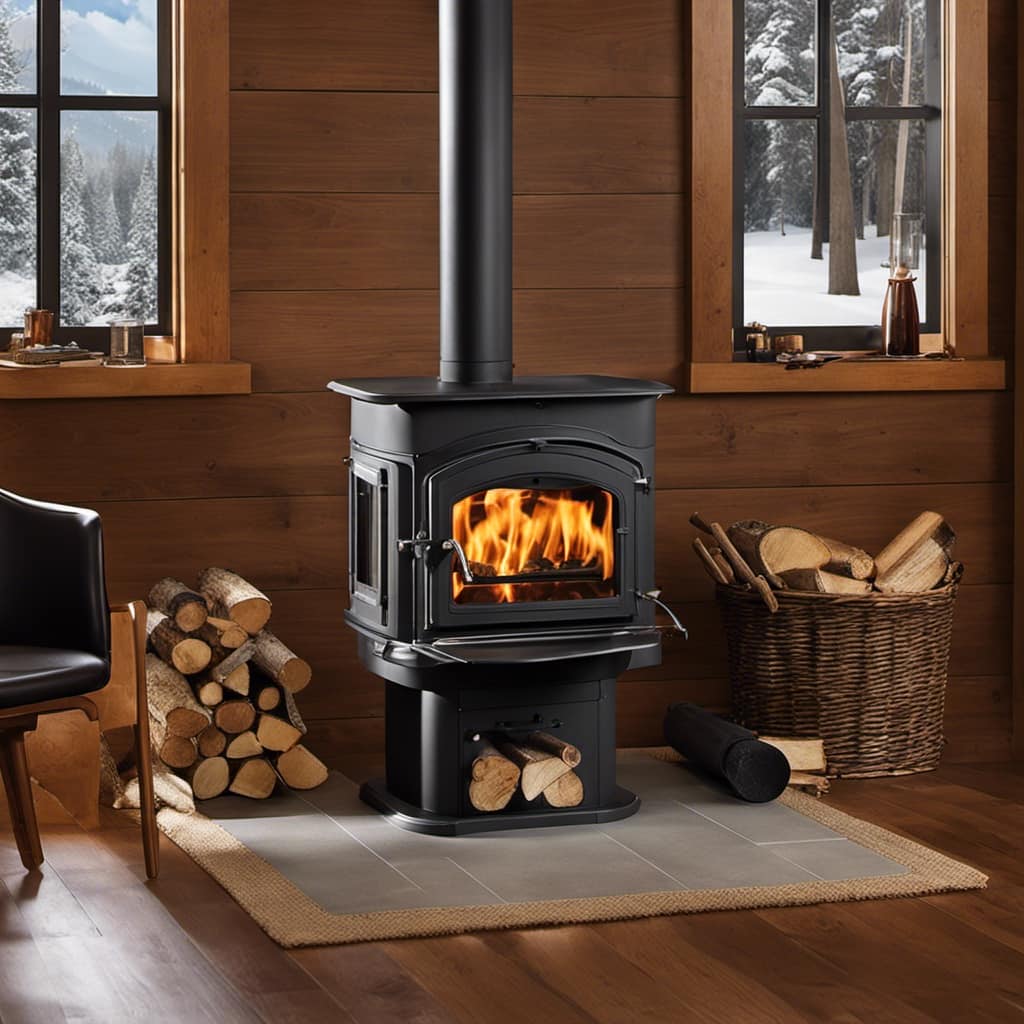
Ventilation Systems for Mobile Homes
As an expert in mobile home safety, I understand the importance of proper ventilation systems in ensuring the well-being of residents.
Ventilation systems in mobile homes play a critical role in maintaining indoor air quality, preventing the build-up of harmful gases, such as carbon monoxide, and controlling moisture levels.
It’s essential to meet the ventilation system requirements and ensure safety and compliance to protect the health and comfort of those living in mobile homes.
Importance of Proper Ventilation
I understand the importance of proper ventilation when it comes to mobile home approved wood stoves. Having a well-ventilated space is crucial for many reasons. Here are three key points to consider:

-
Energy Efficiency: Proper ventilation helps in maintaining the energy efficiency of your mobile home. It allows for the efficient circulation of air, preventing heat loss and ensuring that the heat generated by your wood stove is distributed evenly throughout your home.
-
Improved Indoor Air Quality: Good ventilation helps remove pollutants, such as smoke, carbon monoxide, and other harmful gases, from your living space. This ensures the air you breathe is clean and safe, promoting a healthy environment for you and your family.
-
Benefits of Proper Insulation: Alongside ventilation, proper insulation plays a significant role in maintaining the energy efficiency of your mobile home. It helps to keep the warm air inside during colder months and prevents the entry of hot air during summer, reducing the need for excessive heating or cooling.
Ventilation System Requirements
Having a well-functioning ventilation system is crucial for ensuring the proper circulation of air and maintaining a healthy indoor environment. Proper ventilation helps remove stale air, odors, and potentially harmful pollutants from our homes.
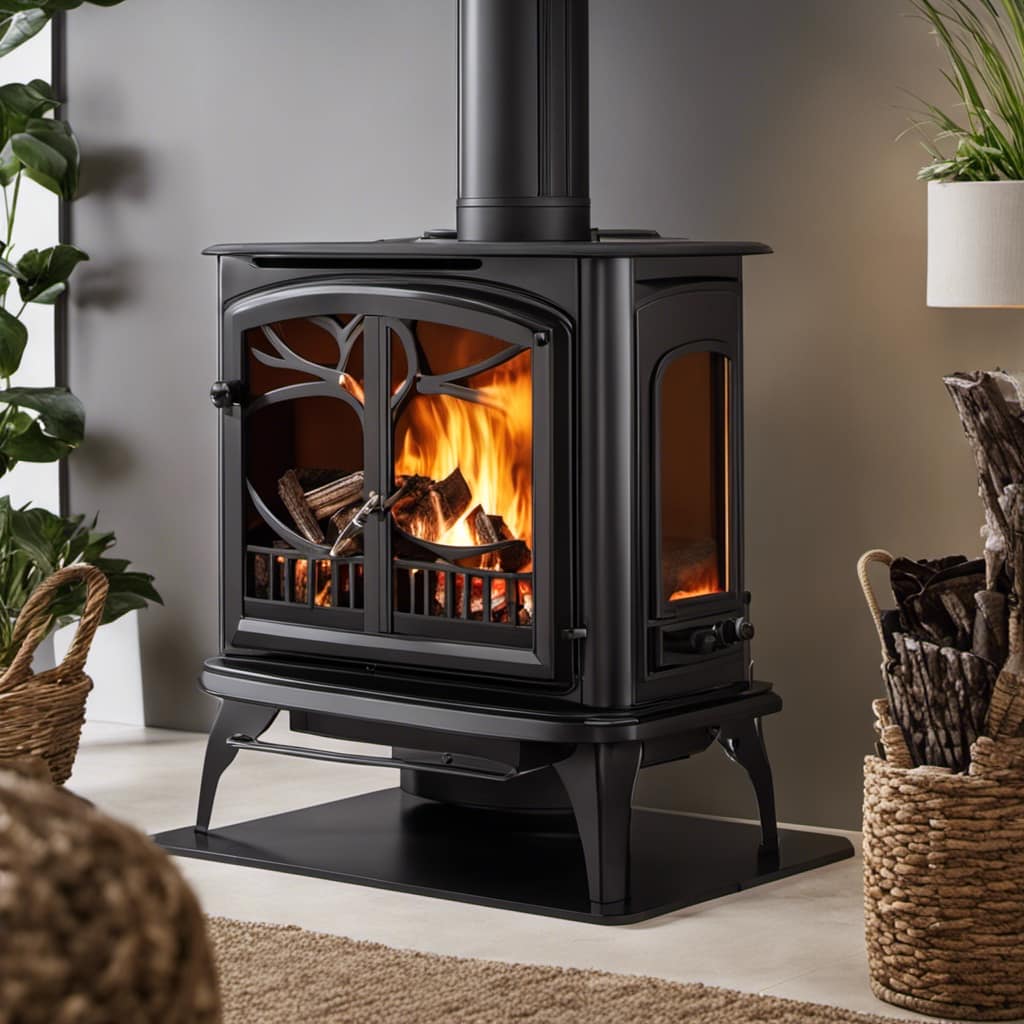
To ensure that your ventilation system is working efficiently, regular maintenance is essential. This includes cleaning or replacing air filters, checking and cleaning ducts, and inspecting the system for any leaks or blockages.
Additionally, troubleshooting ventilation issues promptly is important to prevent further damage and maintain good indoor air quality. If you notice any strange noises, reduced airflow, or inconsistent temperature control, it’s recommended to contact a professional to assess and address the issue.
Ensuring Safety and Compliance
Maintaining compliance with safety regulations is crucial for ensuring the safety of my home’s ventilation system. Here are three key safety measures to ensure compliance:
-
Regular inspections: I schedule regular inspections with a qualified professional to ensure that my ventilation system is functioning properly and meets all safety standards. This includes checking for any blockages or leaks that could compromise the system’s efficiency and safety.
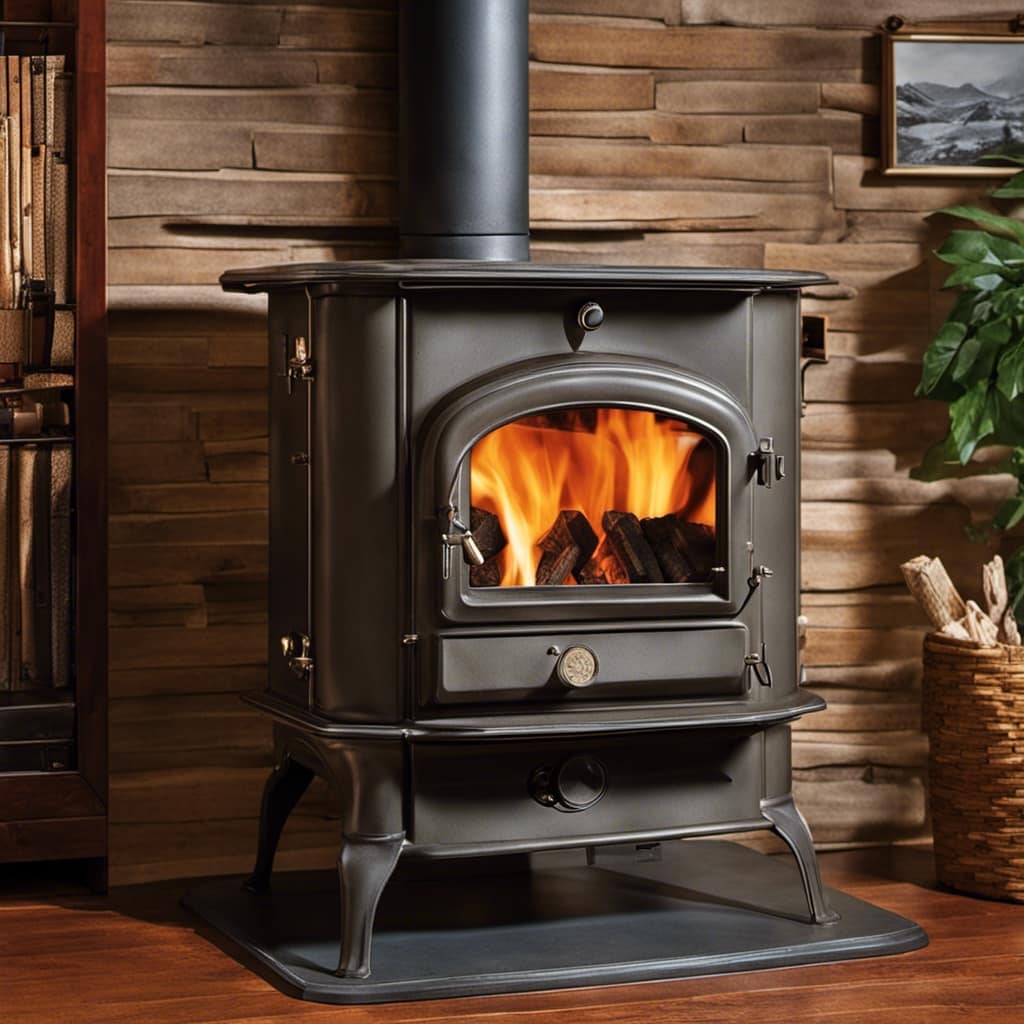
-
Adequate ventilation: Proper ventilation is essential to prevent the buildup of harmful gases, such as carbon monoxide, in my home. I make sure that my ventilation system is designed and installed correctly, providing sufficient airflow to keep the air inside my home clean and safe to breathe.
-
Proper maintenance: I understand the importance of regular maintenance to keep my ventilation system in optimal condition. This includes cleaning or replacing filters, removing any debris or obstructions, and addressing any repairs promptly.
By following these safety measures and ensuring compliance with regulations, I can rest assured that my home’s ventilation system is operating safely and effectively.
Now, let’s move on to the next section about choosing the right size and capacity for my mobile home.
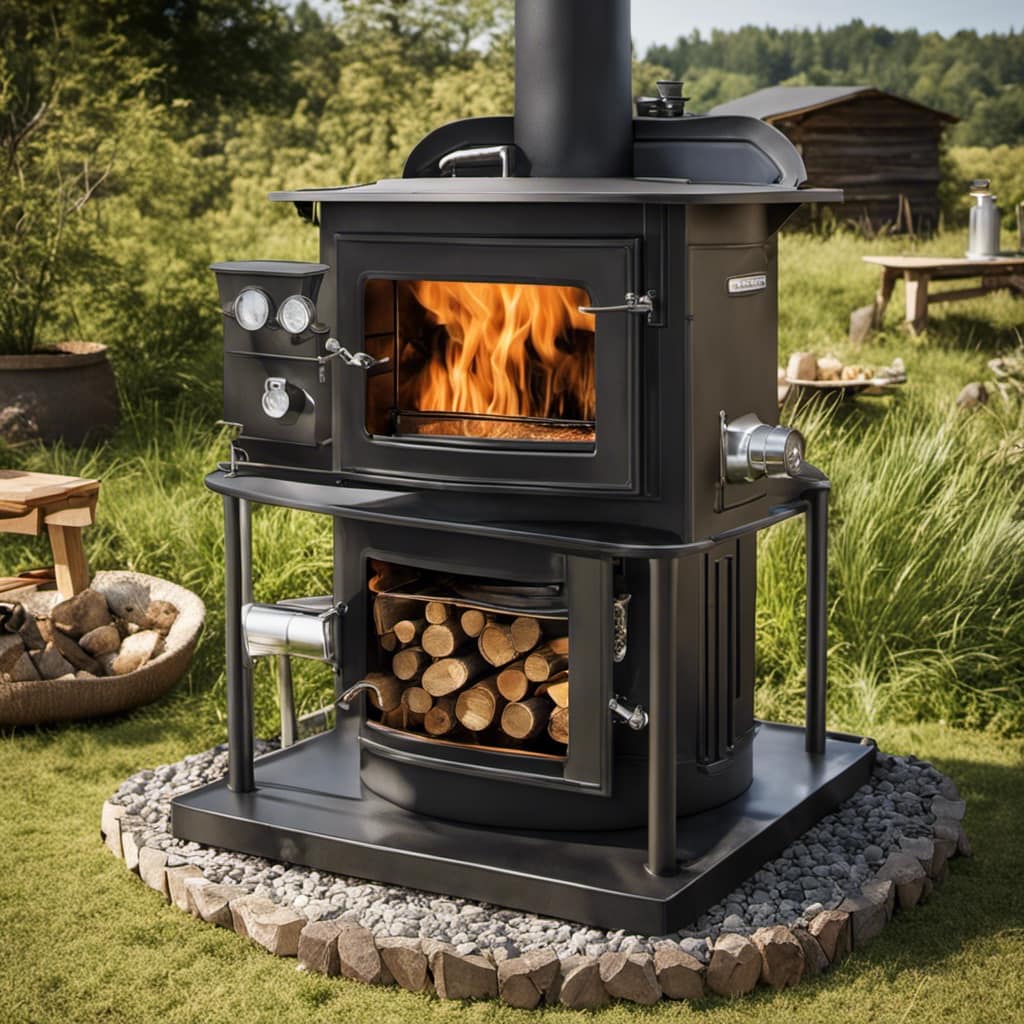
Choosing the Right Size and Capacity for Your Mobile Home
When selecting a wood stove for my mobile home, it’s important to consider the appropriate size and capacity. Choosing the right size ensures that the wood stove will fit well within the limited space of a mobile home. It’s crucial to measure the available area to determine the maximum dimensions that can be accommodated. Additionally, understanding clearances is essential to prevent any fire hazards. Clearances refer to the minimum distance that must be maintained between the wood stove and combustible materials, such as walls, furniture, or curtains. These clearances are necessary to ensure proper airflow and to prevent any potential accidents.
To choose the right size wood stove, I need to consider the heating requirements of my mobile home. Factors such as the size and insulation of the space, as well as the climate in my area, play a significant role in determining the stove’s capacity. It’s recommended to consult with a professional to determine the appropriate size and capacity for my specific needs.
Furthermore, understanding the clearances is crucial to ensure the safe operation of the wood stove. Different models and manufacturers may have specific clearance requirements, so it’s important to carefully read and follow the manufacturer’s instructions. Clearances can vary depending on the type of wall or material, so it’s essential to be aware of these specifications to prevent any potential fire risks.
Exploring the Different Fuel Options for Mobile Home Wood Stoves
I prefer using hardwood pellets as the fuel source for my wood stove in my mobile home. They offer several advantages over other fuel options, making them the ideal choice for me. Here are three reasons why I find hardwood pellets to be the best fuel option for my mobile home wood stove:
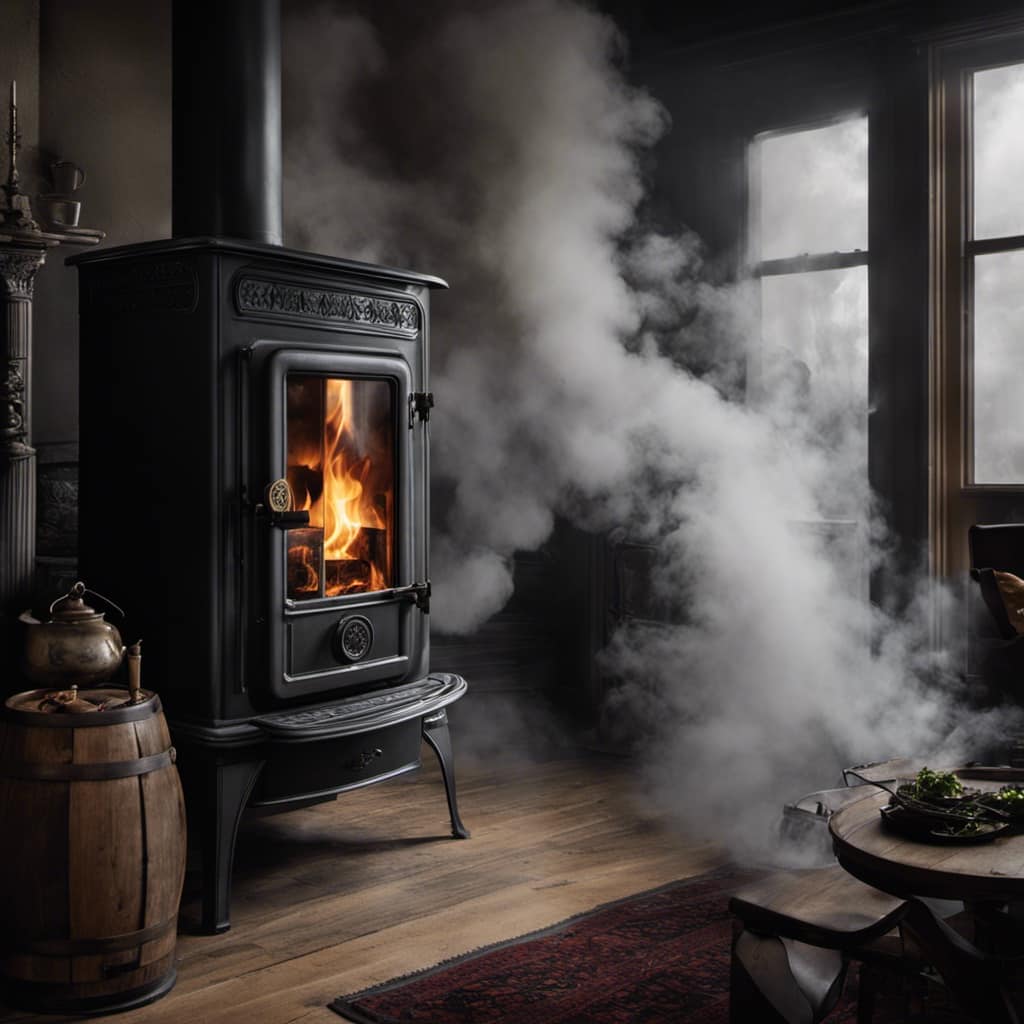
-
Efficiency: Hardwood pellets burn efficiently, producing a high amount of heat with minimal waste. This means that I can heat my mobile home effectively while using less fuel, saving me money in the long run.
-
Cleanliness: Compared to traditional firewood, hardwood pellets produce less ash and smoke. This means less mess to clean up and fewer pollutants released into the air. It’s important to me to have a clean and healthy living environment in my mobile home.
-
Convenience: Hardwood pellets come in compact, easy-to-store bags, making them convenient to use and store in my limited space. I don’t have to worry about finding and chopping firewood; instead, I can simply pour the pellets into the stove and enjoy a warm, cozy home.
Overall, hardwood pellets provide an efficient, clean, and convenient fuel option for my mobile home wood stove. They meet all my heating needs while also being environmentally friendly.
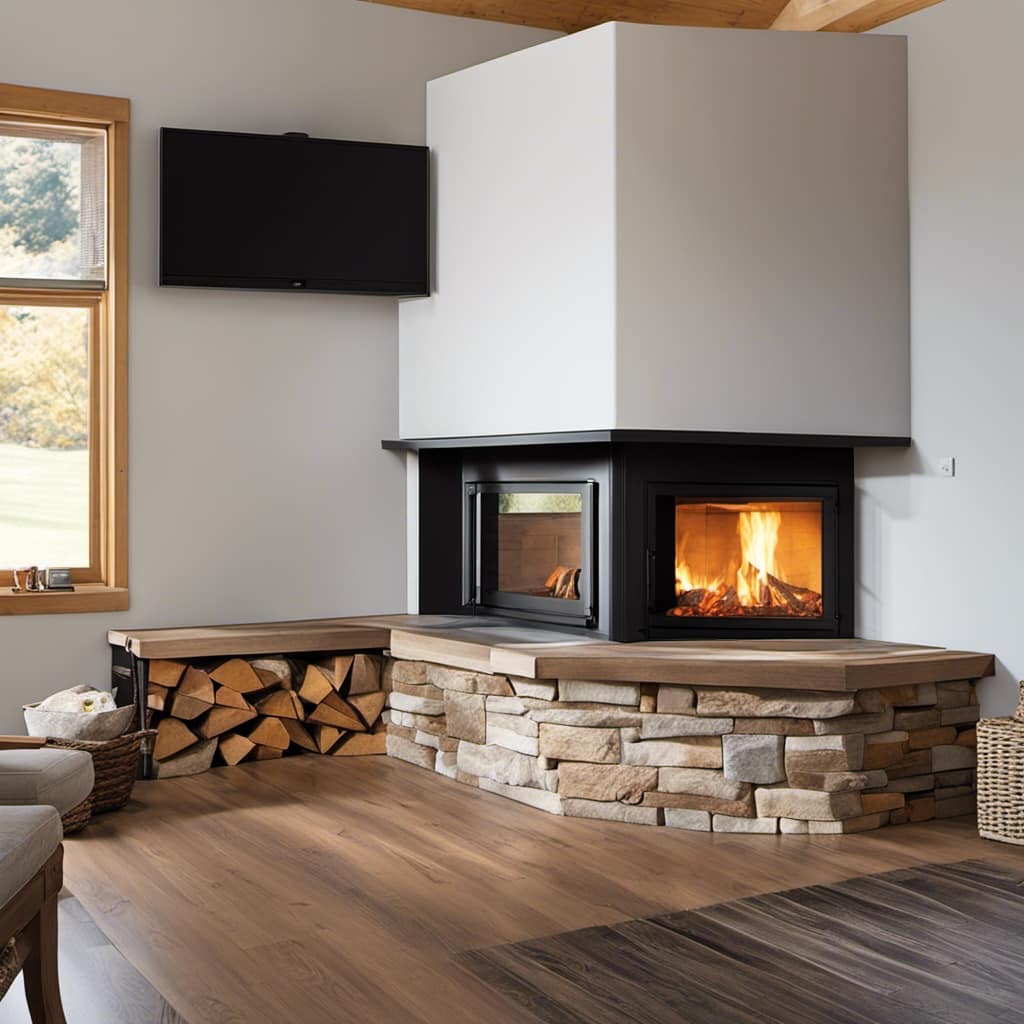
Installation Considerations for Mobile Homes
One important consideration for installing a wood stove in my mobile home is ensuring proper ventilation to safely remove smoke and carbon monoxide.
When it comes to the mobile home installation process, there are several factors to consider. First and foremost, it’s crucial to check with local building codes and regulations to ensure compliance. These codes may dictate specific requirements for mobile home wood stove installations, such as clearances to combustible materials and the need for a chimney or venting system.
Additionally, it’s essential to choose a wood stove that’s specifically designed and approved for use in mobile homes. These stoves are typically equipped with safety features like thermal sensors and air intake controls to prevent overheating and ensure efficient combustion.
Furthermore, the installation should be done by a professional who’s knowledgeable about mobile home installations. This will help ensure that the stove is properly connected to the ventilation system and that any necessary modifications are made to accommodate the unique structure of a mobile home.
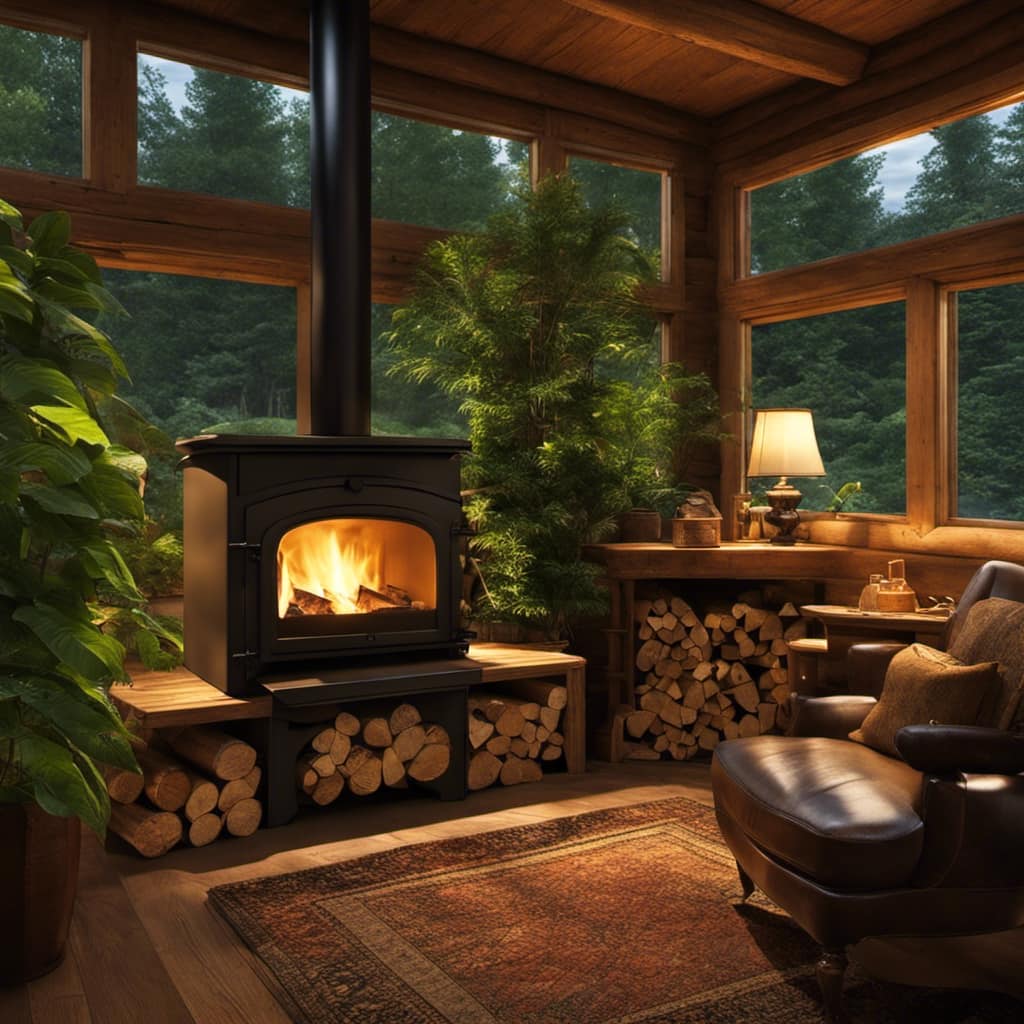
Overall, taking these factors into consideration will help ensure a safe and efficient installation of a wood stove in a mobile home.
Maintaining and Cleaning Your Mobile Home Wood Stove
Maintaining and cleaning my wood stove in the mobile home is essential for its safe and efficient operation. Here are some tips and techniques that I follow to keep my wood stove in top condition:
-
Regular Cleaning: I make sure to clean the ash and debris from the firebox and chimney regularly. This not only prevents blockages but also improves the stove’s performance.
-
Inspecting and Replacing Gaskets: I regularly inspect the gaskets around the door and replace them if necessary. This ensures a tight seal, preventing any leaks that can affect the stove’s efficiency.
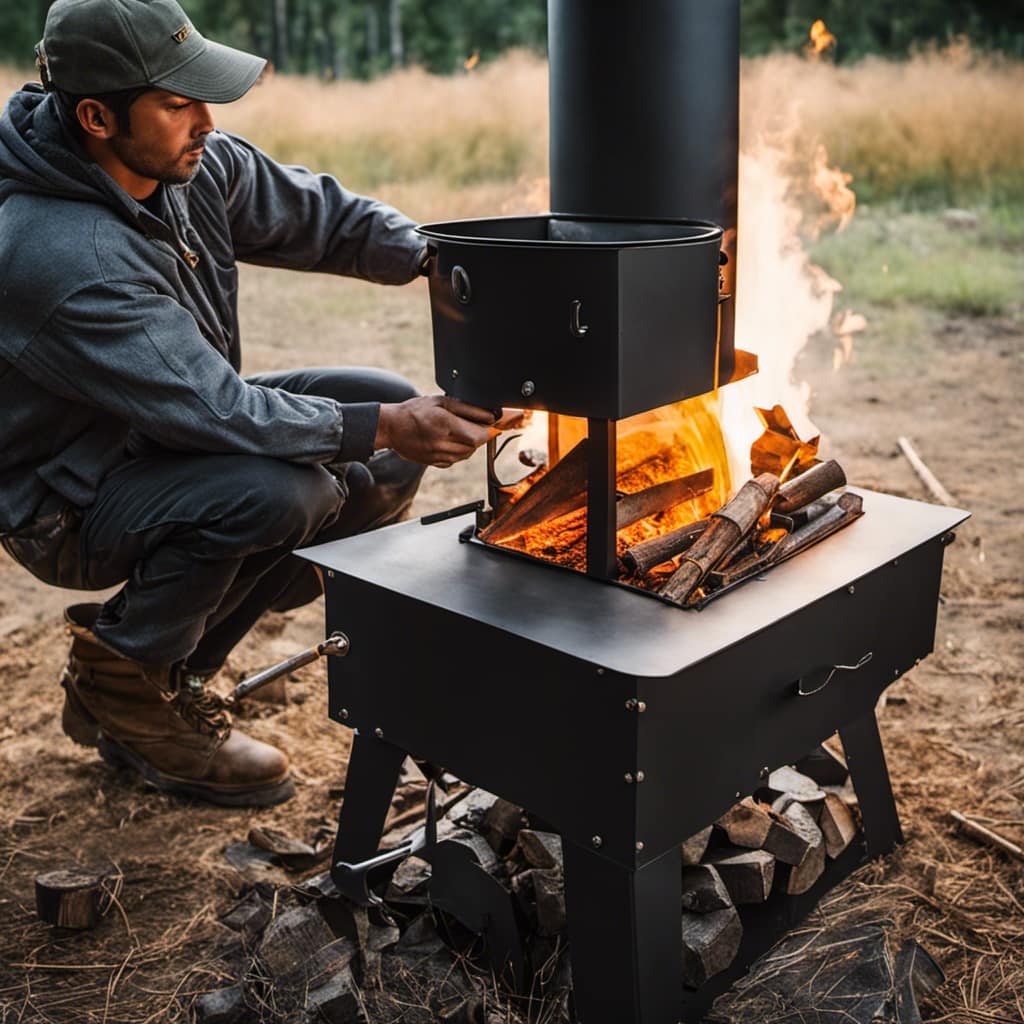
-
Annual Professional Maintenance: I schedule an annual maintenance check by a professional technician who can thoroughly clean and inspect the stove, ensuring that all components are functioning properly.
By following these maintenance tips and cleaning techniques, I can enjoy a safe and efficient wood stove in my mobile home.
Now, let’s address some common misconceptions and FAQs about mobile home approved wood stoves.
Common Misconceptions and FAQs About Mobile Home Approved Wood Stoves
Contrary to popular belief, mobile home approved wood stoves are just as safe and efficient as traditional wood stoves. There are several misconceptions about mobile home approved wood stoves that I would like to address. Many people believe that these stoves are less effective in heating a home or that they are more prone to causing fires. However, these misconceptions are simply not true. In fact, mobile home approved wood stoves undergo rigorous testing to ensure their safety and efficiency.

One of the main reasons why mobile home approved wood stoves are safe is because they are designed to meet specific regulations set forth by mobile home authorities. These regulations include guidelines for proper clearances, venting systems, and heat shielding. By adhering to these regulations, mobile home approved wood stoves provide a safe heating option for mobile home owners.
To further illustrate the safety and efficiency of mobile home approved wood stoves, let’s take a look at the following table:
| Misconception | Fact |
|---|---|
| Mobile home approved wood stoves are less effective in heating a home | Mobile home approved wood stoves are specifically designed to heat small spaces efficiently |
| Mobile home approved wood stoves are more prone to causing fires | Mobile home approved wood stoves undergo rigorous testing to ensure their safety and are equipped with safety features |
As you can see, mobile home approved wood stoves are not only safe but also efficient in heating mobile homes. These stoves are a reliable and cost-effective heating option for mobile home owners.
Frequently Asked Questions
Can a Wood Stove Be Installed in Any Mobile Home?
Yes, a wood stove can be installed in certain mobile homes. However, it’s important to consider wood stove safety and meet specific requirements for mobile home installations.
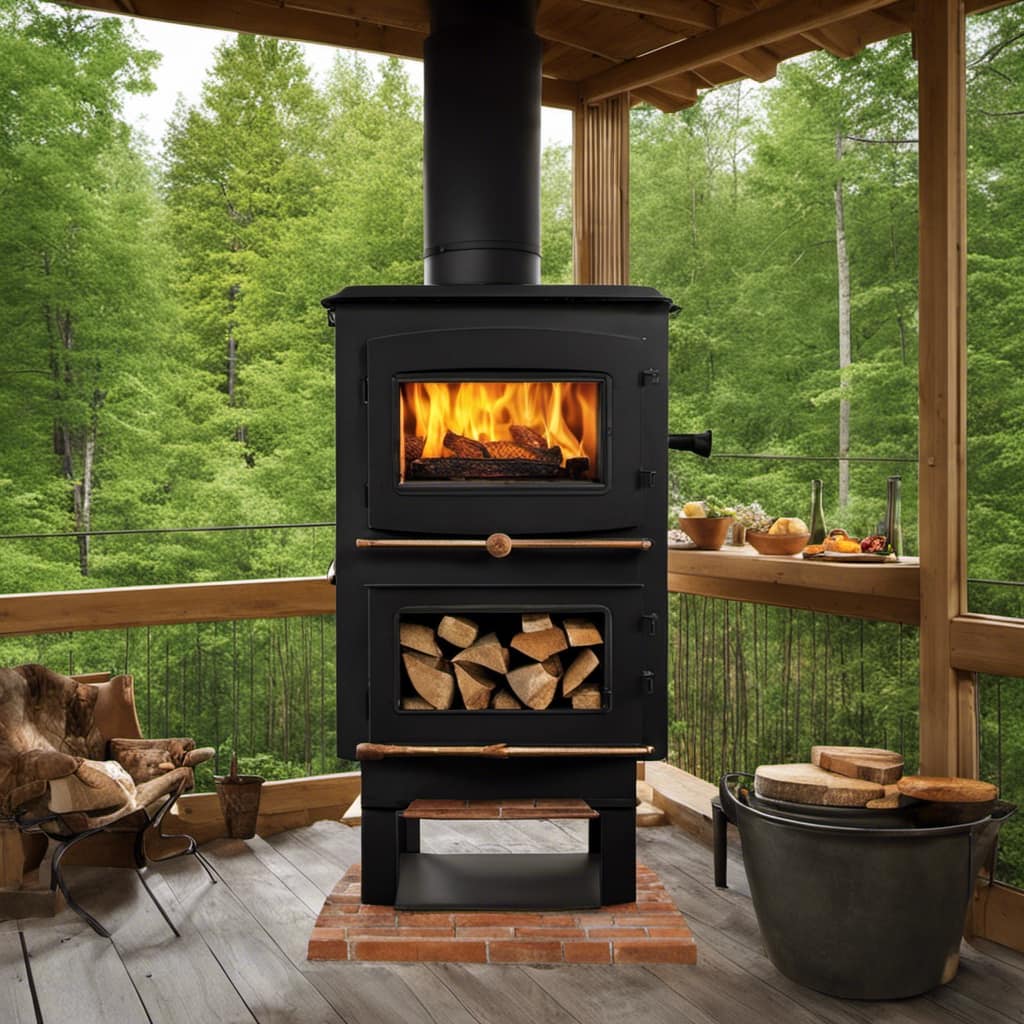
There are advantages to using a wood stove in a mobile home, such as cost savings on heating bills and the cozy ambiance it provides.
It’s crucial to follow guidelines and regulations to ensure a safe and efficient installation.
Are There Any Specific Regulations for Venting a Wood Stove in a Mobile Home?
The pros and cons of wood stoves in mobile homes are worth considering. While they can provide efficient heating and a cozy atmosphere, safety precautions for venting a wood stove in a mobile home are crucial.
It’s essential to follow specific regulations to ensure proper installation and venting. These regulations focus on protecting against fire hazards and carbon monoxide poisoning. Taking these safety measures into account is essential for the well-being of mobile home residents.
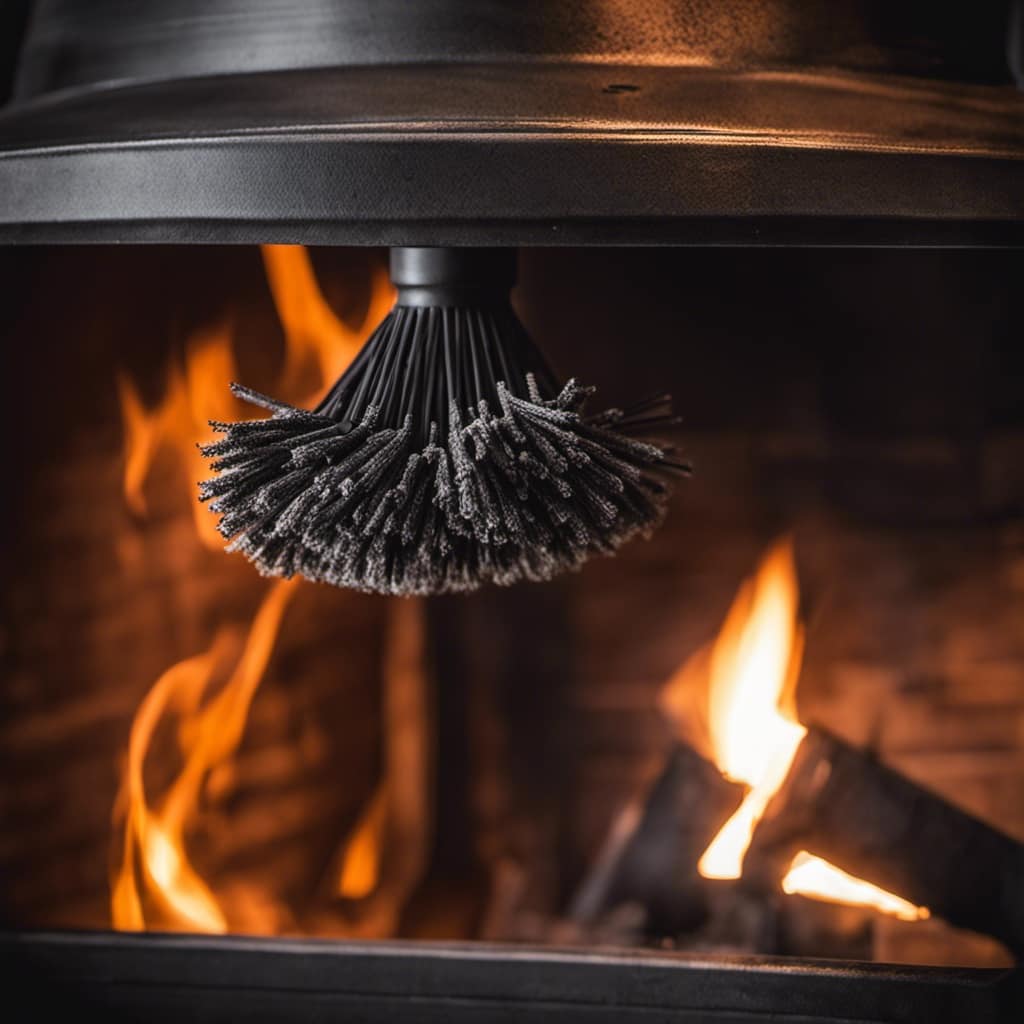
How Often Should I Clean and Maintain My Mobile Home Wood Stove?
I’ll start by addressing the question of how often to clean and maintain a mobile home wood stove.
Regular maintenance is crucial for optimal performance and safety. It’s recommended to clean the stove at least once a year, but I suggest checking for creosote buildup every few months.
Additionally, inspect and clean the chimney, check for any loose or damaged parts, and ensure proper airflow.
Following these tips will help keep your mobile home wood stove in good condition.
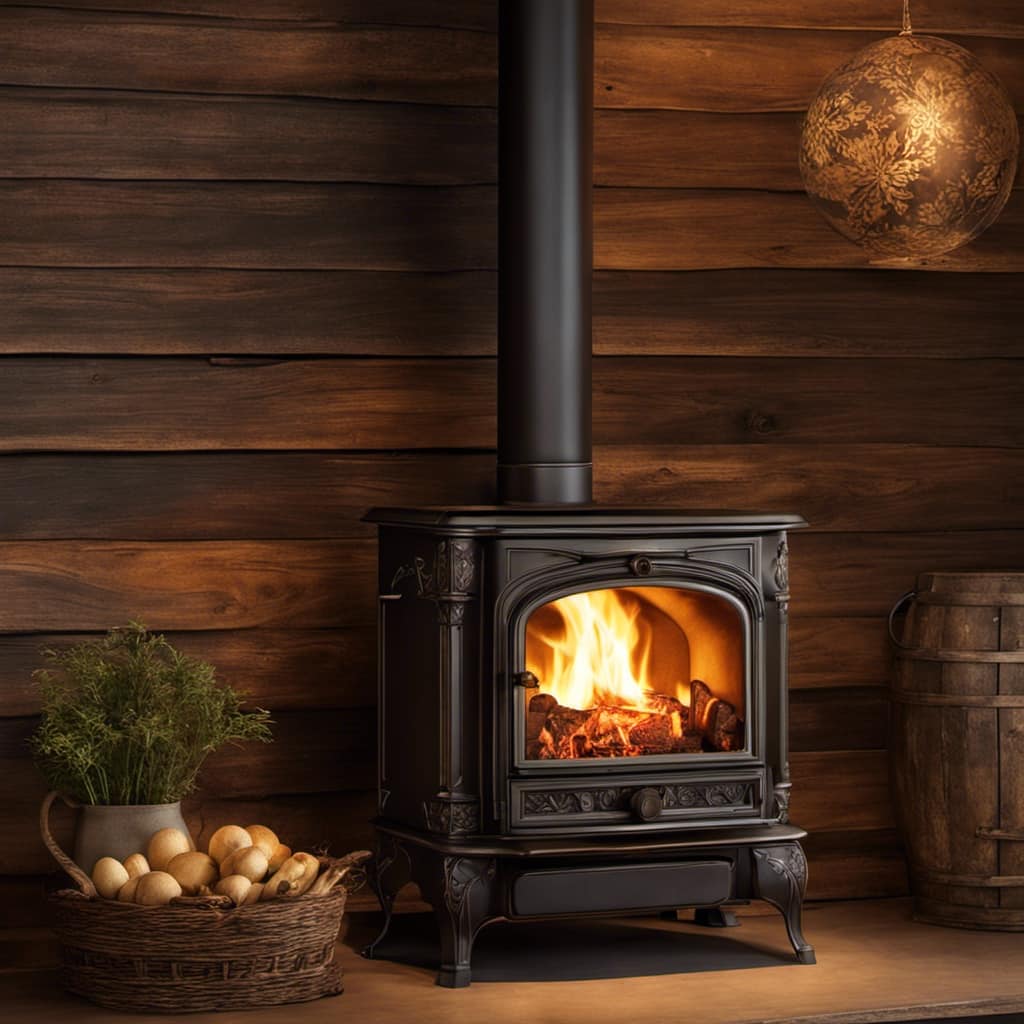
Are There Any Fuel Options That Are Not Recommended for Mobile Home Wood Stoves?
When it comes to fuel options for mobile home wood stoves, there are a few things to consider. Some fuels, like seasoned firewood or wood pellets, are commonly recommended and approved for use in mobile home wood stoves.
However, there are other fuel options, such as coal or unseasoned firewood, that aren’t recommended due to safety concerns.
It’s important to carefully choose the right fuel for your mobile home wood stove to ensure efficient and safe operation.
Can I Install a Mobile Home Wood Stove Myself, or Do I Need to Hire a Professional?
Installing a mobile home wood stove can be a complex task, so it’s important to consider the benefits of hiring a professional.
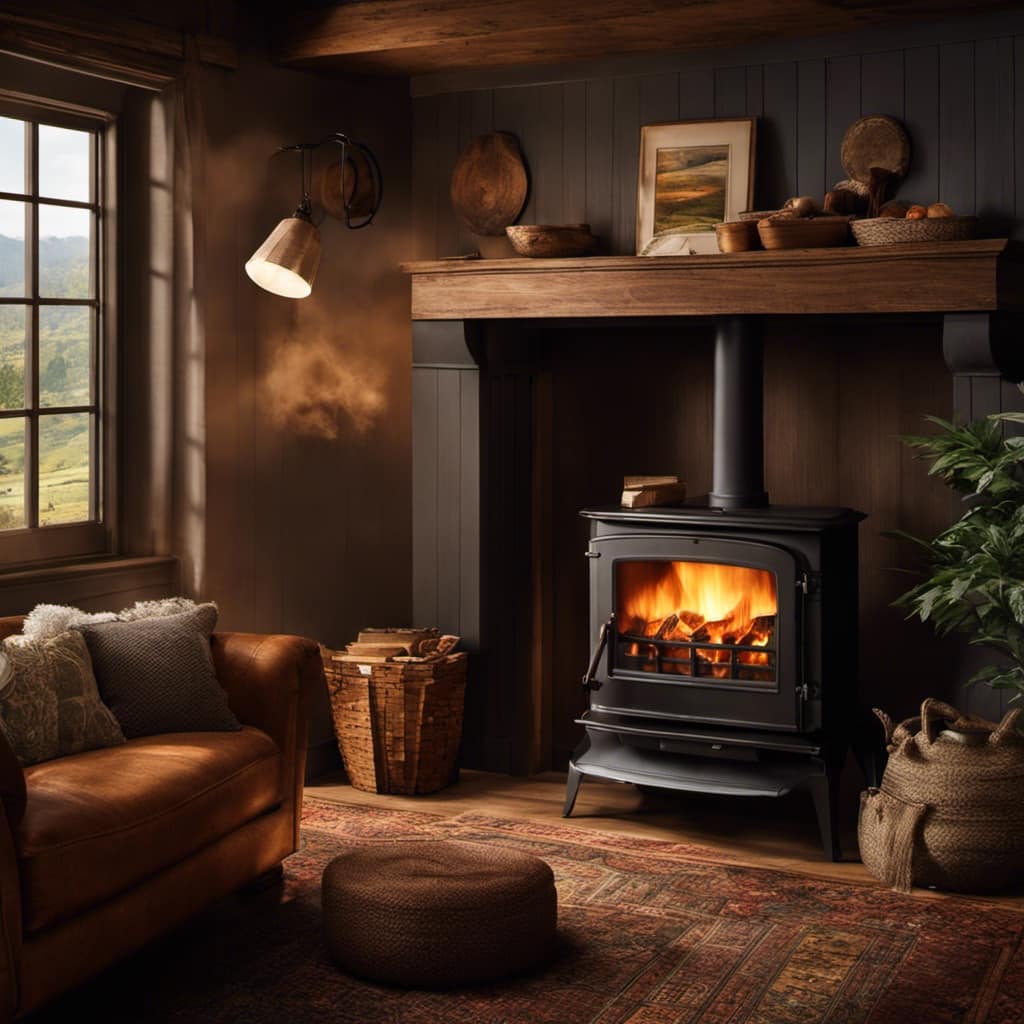
They have the expertise and knowledge to ensure the stove is installed correctly and safely.
While it may be tempting to try and install it yourself, doing so could lead to potential hazards and safety issues.
Hiring a professional will give you peace of mind and ensure a successful installation.
Conclusion
In conclusion, choosing a mobile home approved wood stove is crucial for the safety and comfort of your mobile home. With proper certification, understanding of clearances and safety requirements, ventilation systems, and fuel options, you can ensure a well-functioning and efficient wood stove for your mobile home.
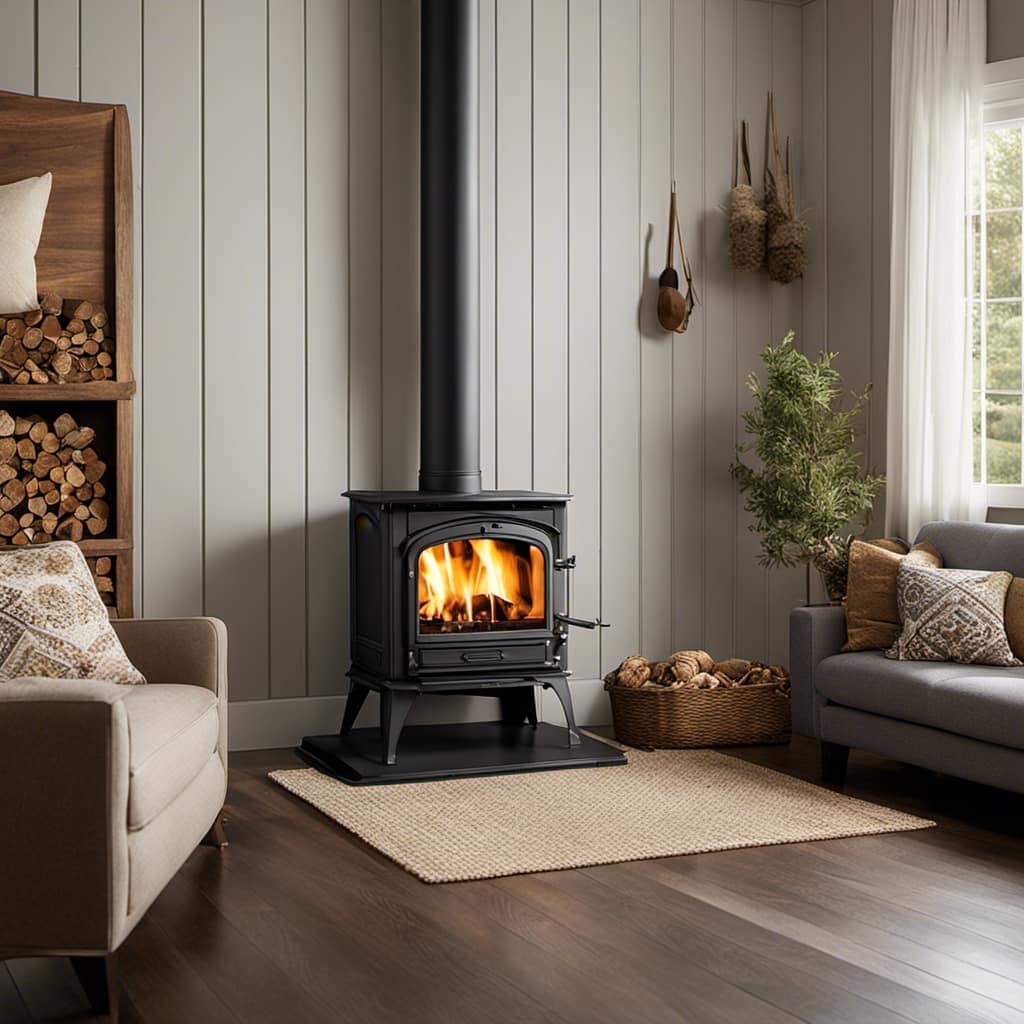
Additionally, careful installation, regular maintenance, and cleaning will help prolong the lifespan of your wood stove. Don’t let misconceptions deter you, as mobile home approved wood stoves are a reliable and effective heating solution.
Growing up surrounded by the vast beauty of nature, Sierra was always drawn to the call of the wild. While others sought the comfort of the familiar, she ventured out, embracing the unpredictable and finding stories in the heartbeat of nature.
At the epicenter of every remarkable venture lies a dynamic team—a fusion of diverse talents, visions, and passions. The essence of Best Small Wood Stoves is crafted and refined by such a trio: Sierra, Logan, and Terra. Their collective expertise has transformed the platform into a leading authority on small wood stoves, radiating warmth and knowledge in equal measure.






